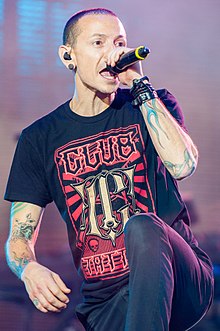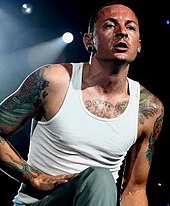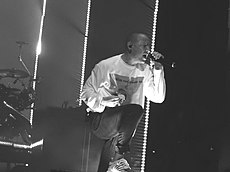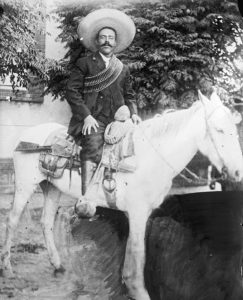 On this day in 1923, prominent Mexican Revolutionary general, Pancho Villa was killed when a fusillade of over 40 gunshots hit the automobile he was riding in, in Parral, Mexico. Villa was 45. Born José Doroteo Arango Arámbula on 5 June 1878 in La Coyotada, San Juan del Río, Durango, Mexico.
On this day in 1923, prominent Mexican Revolutionary general, Pancho Villa was killed when a fusillade of over 40 gunshots hit the automobile he was riding in, in Parral, Mexico. Villa was 45. Born José Doroteo Arango Arámbula on 5 June 1878 in La Coyotada, San Juan del Río, Durango, Mexico.
As commander of the División del Norte, ‘(Division of the North)’ in the Constitutionalist Army, he was a military-landowner (caudillo) of the northern Mexican state of Chihuahua. Given the area’s size and mineral wealth, it provided him with extensive resources. Villa was also provisional Governor of Chihuahua in 1913 and 1914. Villa can be credited with decisive military victories leading to the ousting of Victoriano Huerta from the presidency in July 1914. Villa then fought his erstwhile leader in the coalition against Huerta, “First Chief” of the Constitutionalists Venustiano Carranza. Villa was in alliance with southern revolutionary Emiliano Zapata, who remained fighting in his own region of Morelos. The two revolutionary generals briefly came together to take Mexico City after Carranza’s forces retreated from it. Later, Villa’s heretofore undefeated División del Norte engaged the military forces of Carranza under Carrancista general Álvaro Obregón and was defeated in the 1915 Battle of Celaya. Villa was again defeated by Carranza, 1 November 1915, at the Second Battle of Agua Prieta, after which Villa’s army collapsed as a significant military force.
Villa subsequently led a raid against a small U.S.–Mexican border town resulting in the Battle of Columbus on 9 March 1916, and then retreated to escape U.S. retaliation. The U.S. government sent U.S. Army General John J. Pershing on an expedition to capture Villa, but Villa continued to evade his attackers with guerrilla tactics during the unsuccessful, nine-month incursion into Mexican sovereign territory. The mission ended when the United States entered World War I and Pershing was recalled to other duties.
In 1920, Villa made an agreement with the Mexican government to retire from hostilities, following the ouster and death of Carranza, and was given a hacienda near Parral, Chihuahua, which he turned into a “military colony” for his former soldiers. In 1923, as presidential elections approached, he re-involved himself in Mexican politics. Shortly thereafter he was assassinated, most likely on the orders of Obregón.
In life, Villa helped fashion his own image as an internationally known revolutionary hero, starring as himself in Hollywood films and giving interviews to foreign journalists, most notably John Reed.
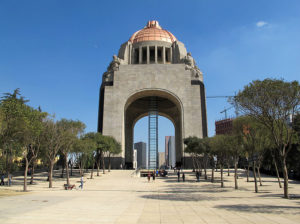 The Final Footprint – The day after his death, Villa’s funeral was held and thousands of his grieving supporters in Parral followed his casket to his burial site. Shortly after his death, two theories emerged about why he was killed. One was that he was killed as an act of family revenge by Jesus Herrera, the last surviving son of Villa’s former general Jose de la Luz Herrera. The other theory that emerged was that Villa was killed for political reasons. At the time of his death, Villa had taken an interest in running for President of Mexico and would have presented a significant challenge to his rival potential candidate Plutarco Elias Calles. While it has never been completely proven who was responsible for the assassination, most historians attribute Villa’s death to a well planned conspiracy, most likely initiated by Plutarco Elías Calles and Joaquin Amaro with at least tacit approval of the then president of Mexico, Obregon. At the time, a state legislator from Durango, Jesus Salas Barraza, whom Villa once whipped during a quarrel over a woman, claimed sole responsibility for the plot. Barraza admitted that he told his friend Gabriel Chavez, who worked as a dealer for General Motors, that he would kill Villa if he were paid 50,000 pesos. Chavez, who wasn’t wealthy and didn’t have 50,000 pesos on hand, then collected money from enemies of Villa and managed to collect a total of 100,000 pesos for Barraza and his other co-conspirators. Barraza also admitted that he and his co-conspirators watched Villa’s daily car-rides and paid the pumpkinseed vendor at the scene of Villa’s assassination to shout “Viva Villa!” either once if Villa was sitting in the front part of the car or twice if he was sitting in the back. It was reported that before Barraza died of a stroke in his Mexico City home in 1951, his last words were “I’m not a murderer. I rid humanity of a monster.” Villa’s purported death mask was hidden at the Radford School in El Paso, Texas, until the 1970s, when it was sent to the Historical Museum of the Mexican Revolution in Chihuahua; other museums have ceramic and bronze representations that do not match this mask. Villa was buried in the city cemetery of Parral, Chihuahua. Villa’s skull was stolen from his grave in 1926. His remains were reburied in the Monument to the Revolution in Mexico City in 1976.
The Final Footprint – The day after his death, Villa’s funeral was held and thousands of his grieving supporters in Parral followed his casket to his burial site. Shortly after his death, two theories emerged about why he was killed. One was that he was killed as an act of family revenge by Jesus Herrera, the last surviving son of Villa’s former general Jose de la Luz Herrera. The other theory that emerged was that Villa was killed for political reasons. At the time of his death, Villa had taken an interest in running for President of Mexico and would have presented a significant challenge to his rival potential candidate Plutarco Elias Calles. While it has never been completely proven who was responsible for the assassination, most historians attribute Villa’s death to a well planned conspiracy, most likely initiated by Plutarco Elías Calles and Joaquin Amaro with at least tacit approval of the then president of Mexico, Obregon. At the time, a state legislator from Durango, Jesus Salas Barraza, whom Villa once whipped during a quarrel over a woman, claimed sole responsibility for the plot. Barraza admitted that he told his friend Gabriel Chavez, who worked as a dealer for General Motors, that he would kill Villa if he were paid 50,000 pesos. Chavez, who wasn’t wealthy and didn’t have 50,000 pesos on hand, then collected money from enemies of Villa and managed to collect a total of 100,000 pesos for Barraza and his other co-conspirators. Barraza also admitted that he and his co-conspirators watched Villa’s daily car-rides and paid the pumpkinseed vendor at the scene of Villa’s assassination to shout “Viva Villa!” either once if Villa was sitting in the front part of the car or twice if he was sitting in the back. It was reported that before Barraza died of a stroke in his Mexico City home in 1951, his last words were “I’m not a murderer. I rid humanity of a monster.” Villa’s purported death mask was hidden at the Radford School in El Paso, Texas, until the 1970s, when it was sent to the Historical Museum of the Mexican Revolution in Chihuahua; other museums have ceramic and bronze representations that do not match this mask. Villa was buried in the city cemetery of Parral, Chihuahua. Villa’s skull was stolen from his grave in 1926. His remains were reburied in the Monument to the Revolution in Mexico City in 1976.
After his death, he was excluded from the pantheon of revolutionary heroes until the Sonoran generals Obregón and Calles, whom he battled during the Revolution, were gone from the political stage. Villa’s exclusion from the official narrative of the Revolution might have contributed to his continued posthumous popular acclaim. He was celebrated during the Revolution and long afterward by corridos, films about his life, and novels by prominent writers.
#RIP #OTD in 1945 poet (“Le Cimetière marin”, “La Jeune Parque”, “L’Ébauche d’un serpent”), essayist, philosopher Paul Valéry died in Paris, aged 73. Cimetière Marin, Sète, France.
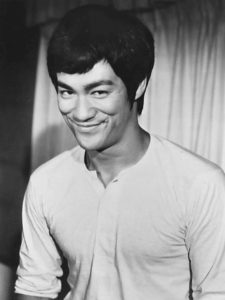 On this day in 1973, actor, martial arts instructor, philosopher, film director, film producer, screenwriter, founder of Jeet Kune Do, and the son of Cantonese opera actor Lee Hoi-Chuen, Bruce Lee died in Hong Kong at the age of 32. After complaining of a headache, Lee took a painkiller, Equagesic, which contained both aspirin and the muscle relaxant meprobamate. Lee took a nap and later could not be woken up. A doctor was summoned, who spent ten minutes attempting to revive him before sending him by ambulance to Queen Elizabeth Hospital. Lee was dead by the time he reached the hospital. There was no visible external injury; however, according to autopsy reports, his brain had swollen considerably. The only substance found during the autopsy was Equagesic. When the doctors announced Lee’s death officially, it was ruled a “death by misadventure”. Donald Teare, a forensic scientist recommended by Scotland Yard who had overseen over 1,000 autopsies, was assigned to the Lee case. His conclusion was “death by misadventure” caused by an acute cerebral edema due to a reaction to compounds present in the combination medication Equagesic.
On this day in 1973, actor, martial arts instructor, philosopher, film director, film producer, screenwriter, founder of Jeet Kune Do, and the son of Cantonese opera actor Lee Hoi-Chuen, Bruce Lee died in Hong Kong at the age of 32. After complaining of a headache, Lee took a painkiller, Equagesic, which contained both aspirin and the muscle relaxant meprobamate. Lee took a nap and later could not be woken up. A doctor was summoned, who spent ten minutes attempting to revive him before sending him by ambulance to Queen Elizabeth Hospital. Lee was dead by the time he reached the hospital. There was no visible external injury; however, according to autopsy reports, his brain had swollen considerably. The only substance found during the autopsy was Equagesic. When the doctors announced Lee’s death officially, it was ruled a “death by misadventure”. Donald Teare, a forensic scientist recommended by Scotland Yard who had overseen over 1,000 autopsies, was assigned to the Lee case. His conclusion was “death by misadventure” caused by an acute cerebral edema due to a reaction to compounds present in the combination medication Equagesic.
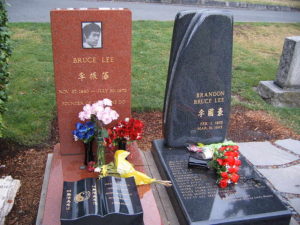 The Final Footprint – Lee’s wife Linda returned to her hometown of Seattle, and had him buried at lot 276 of Lakeview Cemetery. Pallbearers at his funeral on 31 July 1973 included Taky Kimura, Steve McQueen, James Coburn, Chuck Norris, George Lazenby, Dan Inosanto, Peter Chin, and Lee’s brother Robert. Lee’s iconic status and untimely demise fed many theories about his death, including murder involving the triads and a supposed curse on him and his family. Black Belt magazine in 1985 carried the speculation that the death of Bruce Lee in 1973 may have been caused by “a delayed reaction to a Dim Mak strike he received several weeks prior to his collapse”. Born Lee Jun-fan on 27 November 1940 in San Francisco.
The Final Footprint – Lee’s wife Linda returned to her hometown of Seattle, and had him buried at lot 276 of Lakeview Cemetery. Pallbearers at his funeral on 31 July 1973 included Taky Kimura, Steve McQueen, James Coburn, Chuck Norris, George Lazenby, Dan Inosanto, Peter Chin, and Lee’s brother Robert. Lee’s iconic status and untimely demise fed many theories about his death, including murder involving the triads and a supposed curse on him and his family. Black Belt magazine in 1985 carried the speculation that the death of Bruce Lee in 1973 may have been caused by “a delayed reaction to a Dim Mak strike he received several weeks prior to his collapse”. Born Lee Jun-fan on 27 November 1940 in San Francisco.
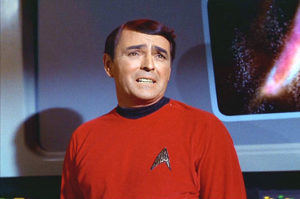 On this day in 2005, Royal Regiment of Canadian Artillery veteran, character and voice actor, James Doohan died at his home in Redmond, Washington from pneumonia and Alzheimer’s, at the age of 85. Born James Montgomery Doohan on 3 March 1920 in Vancouver, British Columbia. His parents emigrated to Canada from Bangor, County Down, Northern Ireland. Perhaps best known and loved for his portayal of Montgomery “Scotty” Scott in the television and film series Star Trek, created by Gene Roddenberry and also featuring William Shatner as James Tiberius Kirk, Leonard Nimoy as Spock, DeForest Kelley as Dr. Leonard H. “Bones” McCoy, Nichelle Nichols as Nyota Uhuru, George Takei as Hikaru Sulu and Walter Koenig as Pavel Andreievich Chekov. Yes, I am an unabashed Trekkie! Doohan married three times; Janet Young (divorced 1964), Anita Yagel (1967-1972 divorce) and Wende Braunberger (1974-2005 his death). Beam me up Scotty!
On this day in 2005, Royal Regiment of Canadian Artillery veteran, character and voice actor, James Doohan died at his home in Redmond, Washington from pneumonia and Alzheimer’s, at the age of 85. Born James Montgomery Doohan on 3 March 1920 in Vancouver, British Columbia. His parents emigrated to Canada from Bangor, County Down, Northern Ireland. Perhaps best known and loved for his portayal of Montgomery “Scotty” Scott in the television and film series Star Trek, created by Gene Roddenberry and also featuring William Shatner as James Tiberius Kirk, Leonard Nimoy as Spock, DeForest Kelley as Dr. Leonard H. “Bones” McCoy, Nichelle Nichols as Nyota Uhuru, George Takei as Hikaru Sulu and Walter Koenig as Pavel Andreievich Chekov. Yes, I am an unabashed Trekkie! Doohan married three times; Janet Young (divorced 1964), Anita Yagel (1967-1972 divorce) and Wende Braunberger (1974-2005 his death). Beam me up Scotty!
The Final Footprint – Doohan was cremated. On 28 April 2007, a portion of his cremains, along with those of astronaut Gordon Cooper, were launched into suborbital flight and then parachuted back to Earth. This portion of Doohan’s cremains were subsequently launched again on 3 August 2008 on a Falcon I rocket which failed two minutes after launch. A portion of his cremains were scattered over Puget Sound in Washington. On May 22, 2012, a small urn containing some of Doohan’s cremains was flown into space aboard the Falcon 9 rocket as part of COTS Demo Flight 2.
| Chester Bennington | |
|---|---|
On this day in 2017, singer, songwriter, musician, and actor Chester Bennington died as a result of hanging himself at his home in Palos Verdes Estates, California at the age of 41. Born Chester Charles Bennington on March 20, 1976 in Phoenix, Arizona. He served as lead singer for the bands Linkin Park, Dead by Sunrise, Grey Daze, and Stone Temple Pilots.
Bennington first gained prominence as a vocalist following the release of Linkin Park’s debut album, Hybrid Theory, in 2000, which became a commercial success. The album was certified Diamond by the Recording Industry Association of America in 2005, making it the best-selling debut album of the decade, as well as one of the few albums ever to hit that many sales. Linkin Park’s following studio albums, from Meteora (2003) to One More Light (2017), continued the band’s success. Linkin Park has sold over 100 million records worldwide.
Bennington formed his own band, Dead by Sunrise, as a side project in 2005. The band’s debut album, Out of Ashes, was released on October 13, 2009. He became the lead singer of Stone Temple Pilots in 2013 to release the extended play record High Rise on October 8, 2013, via their own record label, Play Pen, but left in 2015 to focus solely on Linkin Park. He also appeared in cameo roles in several films, including Crank, Crank: High Voltage and Saw 3D.
He married his first wife, Samantha Marie Olit, on October 31, 1996. Bennington’s relationship with his first wife declined during his early years with Linkin Park, and they divorced in 2005. In 2006, he married Talinda Ann Bentley, a former Playboy model.
The Final Footprint
Bennington’s funeral was held at South Coast Botanic Garden in Palos Verdes, California, on July 29. In addition to his family members and close friends, many musicians who toured or played with Linkin Park were also in attendance. The service also included a full stage for musical tributes. Bennington was cremated.
Have you planned yours yet?
Follow TFF on twitter @RIPTFF


